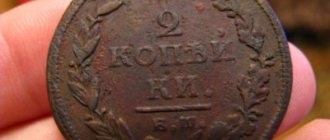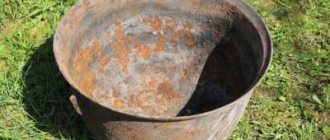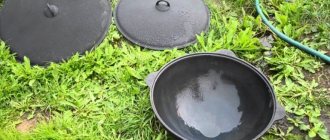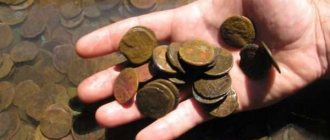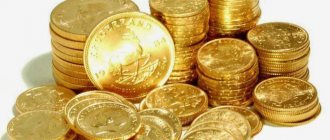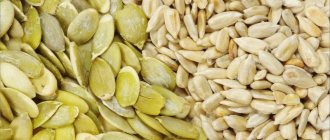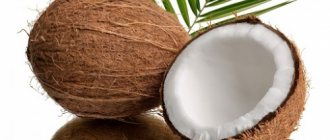Coins are a favorite material for collectors. Of course, zinc coins are not the best option for creating a collection, but they can still be found among historical treasures both in the hands of private collectors and large companies.
Most often, not pure zinc was used in the production of such coins. It was combined with other metals - iron, copper or tin. Coins made from zinc have a "short life" as they are exposed to the environment, causing them to develop dark spots and become dull. Therefore, if you want to return your coins to their former beauty and shine, we offer a few tips that will help you quickly get them in order.
Methods for cleaning coins from blackness
Blackness appears on coins under the influence of time
Blackness appears on kopecks and rubles under the influence of time (patina) , being in the ground, or if the coin has become dirty as a result of prolonged circulation.
If the product has not come into contact with the soil, and the dirt is a consequence of money circulation, cleaning can be done with a sponge moistened with acetone, gasoline, alcohol or 5% formic acid.
Patina is removed with the following substances:
- Soap. The most gentle and long-lasting method. The soap is grated on a coarse or medium grater, poured into a plastic container and poured with a small amount of boiling water. The dissolved substance becomes dense, jelly-like, and coins are placed in it. Depending on the degree of blackening, the duration of action ranges from a day to several weeks.
- Ammonia. The ammonia included in the composition dissolves the patina. It is necessary to wipe the metal with a cotton pad soaked in the product.
- An aqueous solution of turpentine (4 ml), medical alcohol (5 ml) and oxalic acid (1 g). Water is needed in an amount of 1 ml. Cotton wool coated with the mixture should be used to clean the coin.
Ammonia
An even easier way to get rid of stains is ammonia. It does an excellent job of removing greens and other compound deposits. It takes no more than 60 seconds to hold the coin in it. Rub the coin with a cloth for about the same amount of time, which will remove deposits that are not naturally expected. If a minute is not enough for cleaning, the procedure is repeated. If the oxides are still not removed from the coin, you cannot do without abrasive means, although numismatists do not recommend this method. Most collectors prefer Silbertauschbader. However, it can be difficult to obtain, but you can order it online.
Methods for cleaning coins from green plaque
Green deposits form on copper coatings.
The reason for its appearance is oxidation. The surface is covered with copper carbonate salts, which have a green tint of various shades.
How to clean old coins
The gentlest way to clean the product is to use citric acid (5-10%), as it slowly corrodes salts and oxide without touching the metal copper.
The plaque removal process involves the following steps:
- Pour citric acid into a fairly large container.
- Submerge the coins completely in the liquid. Products should not touch each other and have minimal contact with the walls of the container, otherwise cleaning will be uneven.
- A couple of times a day you should take out a coin and remove the lagging layers. A soft toothbrush is suitable for this. Do not press too hard or rub for too long as this will cause reddish stains.
The second method involves using 9% food grade vinegar.
The cleaning procedure is as follows:
- Pour vinegar (about 60 ml) into a wide container.
- Add a liter of distilled water.
- Place a coin in the container so that it does not touch the walls.
- Take it out every day and remove any loose plaque.
In both methods, the contact time is selected individually, and is determined by the state in which the coin is located.
Paste GOI
GOI paste can help in the fight against complex stains. However, this method is undesirable, and as for rare and valuable items, it is completely unacceptable. However, inexpensive coins with its help acquire a chic shine. Therefore, this method is only suitable for products that you do not plan to sell.
The action of GOI paste is based on an abrasive composition. By and large, the same as in the process of cleaning with soda, but the composition is more professional, so cleaning is carried out much faster. If coins are poorly preserved and have small relief, which is important, abrasive methods should be abandoned, as you can completely lose it.
Methods for cleaning bimetallic coins
The center of such products is made of cupronickel, and the outer ring is made of brass. Cleaning is challenging as metals require different handling.
Read more ► How to sharpen scissors correctly: 5 methods, procedure and sharpening angle
The best options suitable for both parts may be:
- Soap. Use is similar to removing patina.
- Dishwashing gel. About 30 ml of gel should be poured into a liter of warm water and the product should be left in it for 0.5-1 hour. Then you need to rinse them and wipe them with a flannel cloth.
- Lemon acid . One glass of cool water will require 3 g of powder. Bimetallic coins must be soaked, contact time is 0.5-1 minute. When finished, rub with a soft cloth to add shine to the products.
- Soda. It is necessary to dilute 50 g of powder in 250 ml of boiling water, dip the coins for 20 minutes. If the dirt is very heavy, you can clean the metals with toothpaste, but cleaning may cause scratches.
- Ammonia. Ammonia should be poured into a shallow container, the product should be placed in the liquid for 5-10 seconds, then rinsed and polished.
Ways to Clean Zinc Coins
Attention! Money made from this metal is the most difficult to clean. The complexity of the procedure is that zinc reacts only to strong acids, which can corrode the product, and also quickly darkens under the influence of air in just a couple of hours.
The optimal method is to remove plaque using a 0.5-1% solution of hydrochloric acid.
Cleaning coins with citric acid
The progress of work is as follows:
- Pour acid into a wide container.
- Place money in liquid.
- Use a soft brush to clean the coin, holding it in the liquid.
- Every 2-3 seconds, remove the coin and check its condition, because the substance acts quickly and can dissolve not only plaque, but also metal.
- Rinse the product under strong running water and wipe with a soft cloth.
Automotive paste for chrome parts also removes patina and dirt. The drug “Tsinkar” is suitable for combating plaque. It needs to be applied for 20-30 seconds, then wiped off, the procedure can be repeated if necessary. It is advisable, after removing the substances, dip the coin in a soda solution for 8-10 minutes, rinse, and then dry in the oven.
You can use laundry soap to remove plaque, in a manner similar to removing blackness, and also wipe with a cotton swab moistened with 10% ammonia.
Limonka
A solution of lemon juice of low concentration will serve a good purpose in the process of washing silver. The coin is placed in the solution and gradually turns over. When the dirt begins to peel off, rub the items with a soft cloth. If the dirt is not completely removed, use the procedure again. It is important not to leave the coin unattended for a long time. It may lose its natural color.
How to Clean a Copper Coin
Attention! Copper money, if there is no corrosion on it, but there is a patina, it is better not to touch it.
Depending on the type of active substance, the metal surface may be covered with a green, pale yellow, brown, black or cherry coating. Metal is better cleaned when heated.
Metal is better cleaned when heated
Cleaning agents may be:
- Soda. It is necessary to pour 0.5 liters of water into the pan, add 3-5 tbsp. l. powder, stir. Load collection specimens into liquid. Boil the money on the stove for half an hour, then lightly brush and rinse.
- Soap. Add a little water to the grated component, achieving a “sour cream” consistency; dip money into the mixture until the stains are completely removed.
- Vinegar. Objects are placed in a 7-20% substance for 20 minutes, cleaned with a brush, then washed, and repeat the procedure if necessary.
- Kefir. The product is poured into a glass or plastic container, pouring coins over it for at least half an hour, then rinsed.
- Olive or sunflower oil (can be replaced with Vaseline). Pour 3 cm of oil into the pan, heat it on the stove, then carefully lower the dry coins and leave for 10 minutes without covering with a lid. At the end of the process, you need to remove the oil with a brush or boil it in water.
- "Trilon-B" . Special substance for cleaning copper. The money is dipped into it for 15 minutes, then washed.
- Ammonia (5-15%). Works on red cherry spots. Copper products are completely immersed in the liquid. The duration of action depends on the degree of contamination of the item.
- Vinegar (10%). Suitable for yellowish stains caused by contact with lead or green deposits. Every day you need to take out the product, remove the loose layer of plaque, and check the degree of cleaning.
- Vinegar dough. Table vinegar is mixed with flour, applied to the surface, the frozen mass is cleaned and washed.
- Coca Cola. A drink is poured into a glass vessel, a coin is placed in it and left for several days. To enhance the effect, you can place a container on the battery.
Read more ► How and with what to wash stainless steel dishes at home: folk methods and purchased products
How to clean a silver coin
Attention! To remove stains on this expensive metal, you cannot use abrasive preparations, as they damage the surface. Therefore, silver coins are usually cleaned with chemicals. Before any cleaning, the silver is washed to get rid of normal dirt.
To remove greenish copper compounds on silver, use a 5% solution of sulfuric acid. They pour it into a coin in a glass container, periodically removing, rinsing and brushing off the waste salts.
Cleaning a Coin Using Vinegar and Soda
For the same purpose, 5% formic acid is used. In both cases, it is advisable to heat the liquid to 50 degrees.
If the stains are minor, you can soak the items in baby soap for about 6 hours.
In a difficult situation, if the oxide is hard and dense, but the core is preserved, use this method:
- A piece of aluminum or zinc with holes punched in it (like a grater) is placed at the bottom of the glass container.
- Coins are placed on top of the plate.
- The objects are covered with another sheet of the same metal as on the bottom.
- Fill everything with 5-10% formic acid so that both plates are completely hidden.
- Copies of the collection are often removed and cleaned of off-oxides.
- Clean coins are washed.
The sulfide film is restored using this method:
- Place aluminum foil folded several times in a porcelain bowl.
- The desired silver item is placed on top.
- Pour 1 tablespoon of soda and 1 teaspoon of salt into a liter of water and bring to a boil.
- Press the silver against the aluminum with a non-metallic object and pour the hot solution into it.
- After a minute, remove the item and wash it.
Soda
If you decide to use soda, then first soak the coin in a weak vinegar solution or lemon juice solution. It takes 15-20 minutes to stand it. Next, mix baking soda with water until you get a paste. Using your fingers, rub the pulp over each coin, tracking how the dirt goes away. This way of caring for your silver will not only get rid of impurities, but will also begin to shine beautifully. This method is only suitable for non-valuable items in your collection, since the abrasiveness of soda leaves micro-scratches, which affects the final cost.
Cleaning bronze coins
Important! Bronze reacts strongly to acids, so it is best to avoid using them. After removing the plaque, the metal often loses its color; it is advisable to keep the coins in sunlight for a long time to return the original shade.
Restoring the appearance of bronze coins can be done in the same way as copper coins, but it must be taken into account that ammonia will discolor the surface. Vinegar and ammonia must be diluted with a large amount of liquid.
Read more ► 7 ways to clean gold and diamonds at home: secrets of jewelers
To clean objects made of this metal, you cannot use sulfuric, nitric and hydrochloric acids.
How and with what to clean USSR coins?
USSR currency was made from different materials, so you need to know what the coin is made of before you start cleaning it.
The first copies, released in 1924, were made of copper or silver, in 1926 some of the copies were replaced with aluminum bronze, in 1932.
Durable nickel versions appeared; in 1961, copper-zinc and copper-nickel products began to be minted. Based on the release date of the coin, a cleaning agent is selected.
| Year of issue | Denomination | Material |
| 1924-1925 | 0.5, 1, 2, 3, 5 kopecks | Copper |
| 10, 15, 20 kopecks, fifty dollars, ruble | Silver | |
| 1926-1931 | 1, 2, 3, 5 kopecks | Aluminum bronze |
| 10, 15, 20 kopecks | Nickel | |
| 1961 | 1, 2, 3, 5 kopecks | Copper with zinc |
| 10, 15, 20, 50 kopecks, 1 ruble | Copper with nickel | |
| 1991 | 10 kopecks | Steel |
| 50 kopecks, 1.5 rubles | Copper with nickel | |
| 10 rubles | Bimetal: copper with nickel and copper with zinc |
Numismatic specimens made of nickel are quite durable and are rarely subject to heavy contamination. They are characterized by a reddish-brown coating or greenish spots.
You cannot remove dirt from nickel or copper-nickel coins using vinegar, as the coins will turn red or pink after contact with the substance. Hydrochloric acid and abrasive materials are also not suitable.
Trilon-B, dissolved in liquid in a ratio of 1:10, removes plaque well from nickel . The coin is placed in the mixture, and upon completion of the process, the object is cleaned with a brush. Electrolysis is acceptable, but the anode (+ terminal) must be made of nickel, not graphite.
